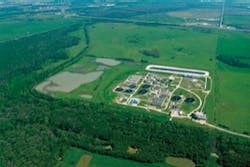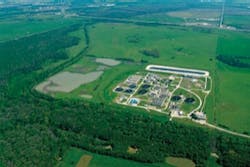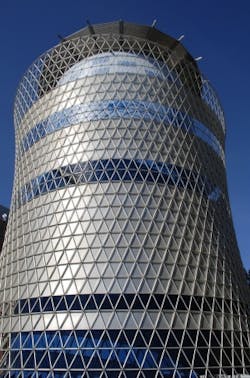State utility plant achieves highest possible 'green' rating, improves energy efficiency, reduces operating costs
SACRAMENTO, CA, Sept. 20, 2011 -- Sacramento's central utility plant, which provides chilled water and steam to cool and heat 23 state-owned buildings in downtown Sacramento, has become the third state facility to receive LEED Platinum status, the highest level of "green" building design certification awarded by the U.S. Green Building Council.
"This central plant is one of the most efficient of its kind in the nation," said Department of General Services Director Fred Klass. "It enables us to continue to reduce energy use in state buildings, as well as cut operating costs."
The facility, which replaced the original plant built in 1968, was designed and built to provide safer and more reliable heating and cooling to state buildings, expand capacity, improve energy efficiency and environmental sustainability. The plant features highly efficient gas-fired steam boilers along with cooling equipment outfitted with variable-speed electric chillers and cooling towers.
The new plant also utilizes on-site renewable energy, including solar photovoltaic panels mounted in the parking area that generate power for the facility's office and support areas, as well as domestic hot water.
"This recognition by the USGBC is just another example of our efforts to obtain LEED certification throughout our entire building portfolio," added Klass.
In addition to the central plant, two other state facilities have achieved the Green Building Council's highest certification level: the CalEPA building and the Department of Education building; both located in Sacramento. To date, approximately 50 state facilities are LEED certified.
Other construction partners included Sacramento's Nacht and Lewis Architects, San Francisco's Flack and Kurtz, plus Lawson Mechanical and Redwood City Electric and a host of other designers and subcontractors working with the state and its major consultants, Capitol Engineering Consultants Inc. and Lionakis Beaumont Design Group, and Jacobs Engineering Group Inc.
###


